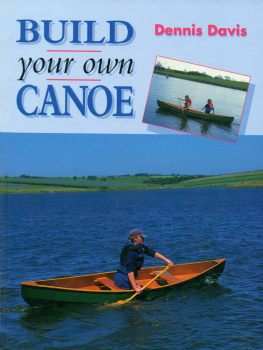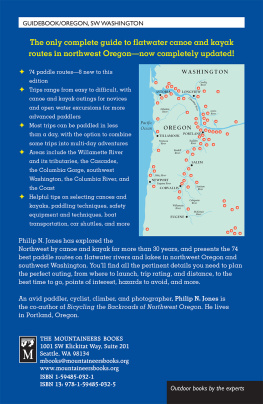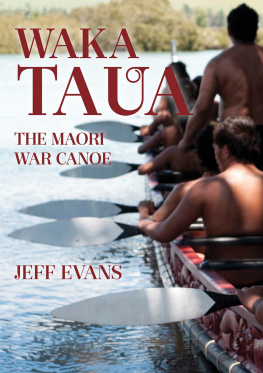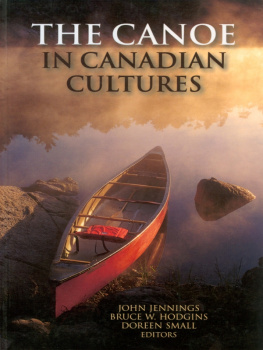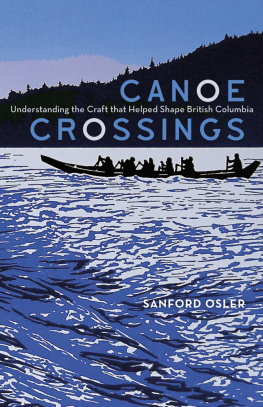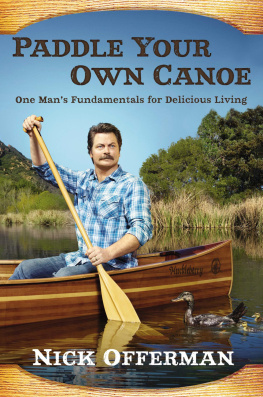BUILD YOUR
OWN CANOE
Dennis Davis

The Crowood Press
First Published in 1997 by
The Crowood Press Ltd
Ramsbury, Marlborough
Wiltshire SN8 2HR
www.crowood.com
This e-book edition first published in 2011
Dennis Davis 1997
All rights reserved. This e-book is copyright material and must not be copied, reproduced, transferred, distributed, leased, licensed or publicly performed or used in any way except as specifically permitted in writing by the publishers, as allowed under the terms and conditions under which it was purchased or as strictly permitted by applicable copyright law. Any unauthorised distribution or use of this text may be a direct infringement of the authors and publishers rights, and those responsible may be liable in law accordingly.
A catalogue reference for this book is available from the British Library
ISBN 978 1 84797 366 5
Acknowledgements
For C, the best proof reader, and in memory of D, who enjoyed being paddled.
The plans and instructions given in this book are to enable the reader to build one DD23 Bliss canoe for personal use. If more than one is to be built, or if further canoes are to be built for resale, additional royalties are then due to the author, who may be contacted at the address given on under C & D Davis.
Neither the author, nor the publisher, can be responsible for the way in which the canoe, or any of the equipment described in this book, is built or used.
All of the photographs are by the author and he would like to express his appreciation to the canoeists in the action pictures and to the owners and makers of the canoes and equipment featured, principally:
Keith Anderson (Suffolk Canoe Company); Alan Bridges (Birch Creek Canoe Company); Graham Mackereth (Pyranha Mouldings Ltd); Graham Warren (Moosehead cedar-canvas canoes).
All photography and line drawings by Dennis Davis.
Introduction
Visit any exhibition or boat show which features canoes and you will see any number of mass-manufactured craft in various plastics intended to tempt the viewer on to the water. What you will not see are very many canoes made from plywood using the simple constructional technique known as stitch-and-tape. My first plywood stitch and tape boat was designed and built in 1964, and I have since been a confirmed enthusiast for the method, considering it to be the easiest and most economical way for the amateur boat builder to get afloat. If the price of off the shelf canoes has thus far kept you and your family from enjoying recreational canoeing, the answer is here in this book; I will guide you through the process of making an inexpensive, lightweight, versatile canoe and give you the information you need to get the most from your canoe.
It is appropriate here to define what I mean by the term canoe, a word that has tended to have a different meaning depending on which side of the Atlantic the paddler is based. In Britain for historical reasons which we shall consider briefly in wood-canvas canoe and the Canadian all-wood type. However, the term canoe has long meant an undecked craft such as the DD23 Bliss, which features in this book. The decked type is correctly known as a kayak; British paddlers are slowly adopting this nomenclature but many still use canoe when they mean kayak. It is, of course, possible to make a plywood kayak but this book will stick to the canoe!
The Open Canoe Association of Great Britain, which has developed from the Canadian-Canoe Association founded in 1956, is specifically concerned with canoeing, while the British Canoe Union covers both canoeing and kayaking and is the governing body of both sports in Britain. Other groups covering minority interests include the Open Canoe Sailing Group (whose members sail paddling canoes fitted with sailing gear as opposed to purpose-designed sailing canoes), the Historic Canoe & Kayak Association and, in the United States, the Wooden Canoe Heritage Association. All organize events to suit the interests of their members and there is usually no objection to non-members attending an event to find out what goes on and to ascertain whether the activities are compatible with their own interests.
In addition to the purely recreational meets, there are a number of competitive events open to the canoeist, ranging from the mildly exerting to the downright difficult. As with many other outdoor pursuits, canoeing can be undertaken at whatever level best suits the canoeist concerned. The British Canoe Union is the prime source of relevant information on local clubs, river access, competence training and coaching, and also organizes the annual International Canoe Exhibition, where much information can be gathered on the many and varied aspects of canoeing and related watersports.
Canoeing is no more dangerous than any other pastime or sport which involves being on or near water, but it does devolve upon the participant to take due care and ensure that he or she is as well prepared as possible. Throughout this book, I have emphasized the advisability of obtaining on-the-water training or instruction at the beginning of your canoeing career.
Incidentally, please take the male personal pronoun as being applicable to both male and female to save me the trouble and the waste of space which giving both wherever applicable would incur.
Perhaps some explanation should be given as to the designation of the DD23 Bliss canoe. The DD23 refers to the twenty-third design in my portfolio (not all of which are currently available as plans). Numbers are a useful means of design identification but from time to time I give in to the urge to bestow a name on a design. Bliss is named after William Bliss, who was one of the pioneers of open canoeing in Britain and, during the 1930s, wrote a couple of evocative books describing his trips on various rivers and canals. Bliss also perfectly describes the gentle, tranquil, or exciting pastime of recreational canoeing, which I hope you will discover when you have built your own Bliss.
1 History of the Canoe
Both the canoe and the kayak originated as working boats and our European leisure craft have come to us via the decked skin-kayak of the Eskimo (Inuit) and the dugout and birch-bark canoe of the North American Indian. In addition to these there are, in many parts of the world, a number of craft loosely referred to as canoes, ranging from reed boats to beautifully constructed dug-outs. Those that developed in the northern hemisphere - from Greenland westward to the Baffin Islands, taking in the northern half of North America on the way, including Canada and Alaska are the types that bear greatest resemblance to the ones that we see and use today.
The Inuit built the skin-covered, fully decked kayak as a vessel for hunting sea mammals. It made efficient use of the materials available and provided the adept solo paddler with a secure hunting platform. For transporting goods and families a larger, open-skin boat called the umiak was used. In this respect the umiak has more in common with the canoe, which was primarily a means of transporting people and goods through the waterways of the North American forests. Even today in parts of North America the canoe is seen as more of a working craft than as a means of recreation, and we must return to Britain to find the roots of the canoe/kayak as a recreational craft.
John MacGregor, an evangelical barrister, is reputed to have been the first recreational kayaker. He had seen both dug-out and birch-bark canoes, and skin-kayaks, while travelling in North America, and on his return to London he had made a relatively short, beamy kayak which he called Rob Roy. The first Rob Roy (there were several later versions), was about 4,570mm long 710mm beam 230mm deep, weighing 36.3kg, just small enough to fit into German railway wagons. She was built of oak using clinker, or lapstrake, construction, where the planks overlap each other (the same method as used for Thames skiffs,) and was fitted with a thin cedar deck. This original Rob Roy, though no longer seaworthy, has survived and is in a private collection. At least two other of MacGregors boats are in museum collections. MacGregor used a double paddle supplemented by a small lug sail as his means of propulsion, and in 1865 he paddled down the Thames at the start of a journey that he would recount in
Next page
